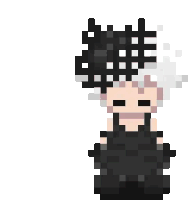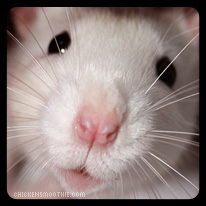TYPE OF QUESTION:Sociology
YOUR QUESTION:Which "theme" does Sociology study - nurture or nature? Explain why.
Bobkitty246 wrote:
TYPE OF QUESTION:math
YOUR QUESTION:the length if Laurie's rectangular swimming pool is triple the width. The pool covers an area of 192m2
A) if Laurie swims across the diagonal and back, how far does she travel? (I know the answer to this a), it should be 151.8 right?)
B) at the same time Laurie starts swimming, her cat walks one lap around the edge of the pool. Laurie can swim 3/4 as fast as her cat can walk. Who will return to the starting point first? Justify your answer. (Now, I got confused here.....I know time=distance over speed, but what's the speed?)
mental racat wrote:
TYPE OF QUESTION:Sociology
YOUR QUESTION:Which "theme" does Sociology study - nurture or nature? Explain why.
Bobkitty246 wrote:
TYPE OF QUESTION:math
YOUR QUESTION:the length if Laurie's rectangular swimming pool is triple the width. The pool covers an area of 192m2
A) if Laurie swims across the diagonal and back, how far does she travel? (I know the answer to this a), it should be 151.8 right?)
B) at the same time Laurie starts swimming, her cat walks one lap around the edge of the pool. Laurie can swim 3/4 as fast as her cat can walk. Who will return to the starting point first? Justify your answer. (Now, I got confused here.....I know time=distance over speed, but what's the speed?)

An Irish Blessing wrote:Always remember to forget
The troubles that passed away.
But never forget to remember
The blessings that come each day.
Unknown wrote:Kindness is free; pass it on
On semi-hiatus wrote:It's been an awesome few years, CS. You've been a pivotal part of my childhood. I pop by every once in a blue moon to reminisce, and find myself smiling at familiar faces in the boards and the cool collectibles each time.
mental racat wrote:
TYPE OF QUESTION:Sociology
YOUR QUESTION:Which "theme" does Sociology study - nurture or nature? Explain why.










Tobias Eaton. wrote:@svel, I got a totally different answer.
The area of the pool is 192m2, and the length is tripled the width, so
3w=L
And the equation would be
3w+w=192
4w=192
W=48
So length would be 144 (48×3)
So now, you have the side lengths, you can use pythageron's theorem to calculate the diagonal.
A2+b2=c2
48^2+144^2=c^2
2304+20736=c^2
23040=c^2
So c= 151.78.... Of rounded to 151.8
Then, multiply it by 2
So it is 303.6 m of the two diagolas back and forth.

















Bobkitty246 wrote:
TYPE OF QUESTION:math
YOUR QUESTION:the length if Laurie's rectangular swimming pool is triple the width. The pool covers an area of 192m2
A) if Laurie swims across the diagonal and back, how far does she travel? (I know the answer to this a), it should be 151.8 right?)
B) at the same time Laurie starts swimming, her cat walks one lap around the edge of the pool. Laurie can swim 3/4 as fast as her cat can walk. Who will return to the starting point first? Justify your answer. (Now, I got confused here.....I know time=distance over speed, but what's the speed?)

















Users browsing this forum: No registered users and 0 guests